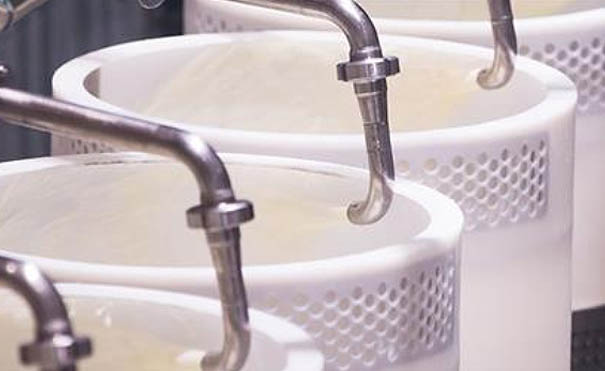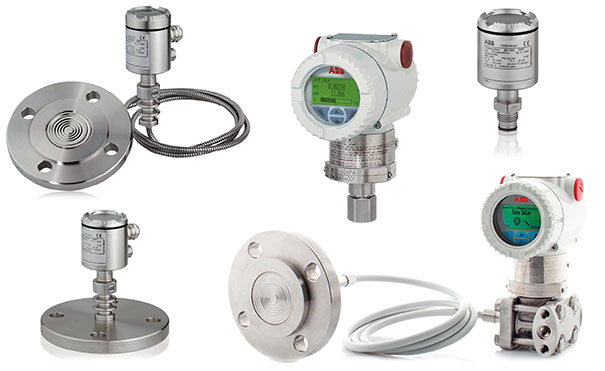Instrumentation Blog
Milk is a commodity that is widely consumed worldwide, despite its high perishability and short shelf-life. Modern processing and pressure measurement instrumentation capabilities have dramatically improved the stability of milk-based goods which are susceptible to dangerous bacterial growth and colloidal degradation over very short periods.
This is primarily due to the complex biological composition of raw milk, which includes: enzymes; fat; lactose; various minerals; proteins; and vitamins, alongside numerous trace elements.
These constituent parts behave differently under varying thermodynamic conditions. Dispersive fat globules migrate readily through milk’s liquid phase – typically at higher rates under ambient pressure or elevated temperatures. Agglomeration of these fatty particles will cause milk to separate and spoil, so it is crucial that milk is subjected to consistent temperature and pressure measurement throughout processing.
This blog post will explore dairy processing in more detail, with a focus on the importance of pressure measurement.
Pressure measurement during pasteurisation
Raw milk may be subjected to pasteurisation directly following delivery, or after a cooling-down period where it is stored in agitated tanks at controlled temperatures of approximately 5°C (41°F). Pressure measurement for dairy storage tanks requires a sensor and transmitter with hygienic connections to eliminate the potential for hazardous cross-contamination. Once the raw material has reached suitable conditions, it is subjected to thermal processing.
Optimising this process requires the ubiquitous use of stainless steels for all instruments in the processing chain, as opposed to merely wetted parts and surfaces. It is also important to use process connections with valid certifications for use in the dairy industry, including 3-A; EEHDG; MID; or OIML-117. ABB supplies both 261 and 266 pressure transmitters with type DRD, DIN11864, or Varivent process connections that are certified for dairy production applications. These are widely utilised in pasteurisation processes.
Pasteurisation is a ubiquitous process in the dairy industry. It was initially developed as a method for sterilising beverages like wine but was subsequently deemed useful for extending the shelf life of processed milk. It is performed by heating milk to temperatures in the region of 74°C (165°F) for up to thirty seconds before it is re-cooled. This effectively destroys harmful microorganisms before the milk can irreversibly destabilise. Pressure measurement is required to maintain overpressure conditions, which ensures that treated and untreated milk does not come into contact. It is also important to perform pressure measurement of the heating cells to mitigate adverse pressure build-up that could contribute to mechanical failure and costly downtime.
Traditional milk processing still utilises a form of pressurised denaturation to achieve a homogenous product that is in-keeping with regulatory standards. Once the raw milk has been pasteurised and standardised, it is passed through a sieve under pressure to separate fatty particles and redistribute them throughout the liquid phase. This demands constant flow pressure measurement within tight degrees of tolerance to ensure that the end-product reaches an optimal consistency without undesirable heterogeneities. It is also important to use an internal vegetable oil such as Neobee, or white oil, in process instruments to ensure Federal Drug Administration (FDA) compliance to ensure the process will not be contaminated.
Pressure Measurement with ABB
ABB is one of the world’s largest suppliers of test and measurement instrumentation for industrial and commercial applications. W H Good Automation have supplied an extensive selection of ABB pressure measurement devices for dairy farm and milk processing applications. If you would like to learn more, read our brochure ‘ABB Measurement Solutions for Dairies‘.
When choosing a pressure sensor for process control and monitoring in a gas flow system or a distillery component, plant operators are faced with an array of choices.
Modern pressure sensors are equipped to provide accurate measurements under arduous operating conditions, providing outstanding resistances to a range of industry-specific corrosives. Absolute, differential, and temperature-compensated pressure measurements can be acquired for containers and pipelines containing: pharmaceutical solvents; flue gas; heated crude oil; and more.
This vast range of pressure sensors represents an industrial problem of choice. The suitability of many pressure components is likely to intersect with multiple applications and sectors, yet there are unique attributes to consider when choosing a pressure sensor for your own facility.
This article will outline four key things to consider when choosing a pressure sensor.
1. Pressure Sensor Type
The primary consideration for selecting a pressure sensor is the type of component that your application requires. For example, negative pressure values cannot be quantified by a gage transmitter, while temperature-compensated pressure measurements can only be carried out by a multivariable pressure sensor or an array of separate pressure and temperature monitors. Pressure transmitters can typically be broken down into four distinct types:
- Absolute pressure measurement sensors use full-vacuum conditions as a reference point, quantifying the pressure levels of a container as a value over 0 bar;
- Differential pressure sensors measure the difference in applied force at two points within a flow system or a process container;
- Gauge pressure measurement instruments use atmospheric pressure of 1.01325 bar (15 psia) as a reference point;
- Multivariable pressure sensors measure the differential and absolute pressure, then compensate that with temperature measurements.
2. Pressure Sensor Range
The pressure range is a superficially simplistic consideration for choosing a pressure sensor. Operators typically depend upon pre-determined application pressure ranges and select a transmitter that matches those values. However, density changes or abrupt pressure variations can reduce the efficacy of measurement equipment, and in extreme cases can damage the component. In such instances, it is advisable to select a sensor with a higher pressure range and calibrate it accordingly.
3. Atmospheric / Process Conditions of Application
Prior to component selection, it is paramount that you consider the corrosive influences that your pressure sensor could be subjected to during operation. Seals may need to be wetted to withstand solvent corrosion in laboratory applications, while special considerations should be taken to protect a pressure sensor’s internal electronics. Corrosive process media or incident humidity can damage transmitters, reducing measurement accuracy and increasing the risk of premature component failure.
4. Onboarding Times
Installation of new components usually impacts a facility’s throughput due to mechanical downtime during integration and reduced efficacy from onboarding processes. For example, the pressure-sensitive diaphragms of a transmitter must be welded to measurement sites to acquire force values and convert them into electrical signals. Ease of weldability and low wiring footprints are critical for rapid and efficient component integration in applications where extended periods of component inactivity are not an option.
Pressure Sensors from ABB
ABB provides a robust range of sensors for customers all over the world. Our range has provided unique measurement solutions for facilities in the oil and gas, energy, laboratory sectors, and more.





